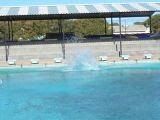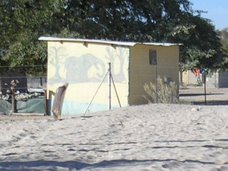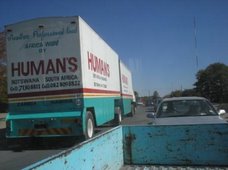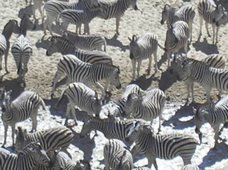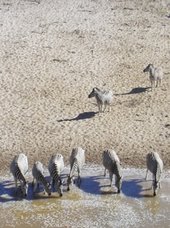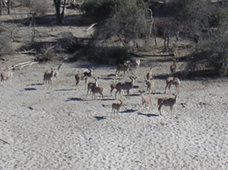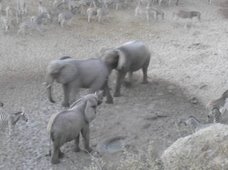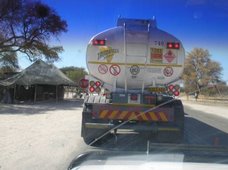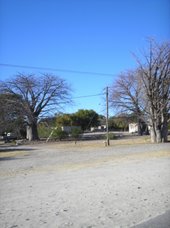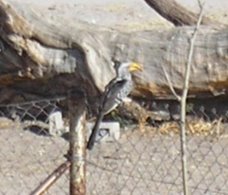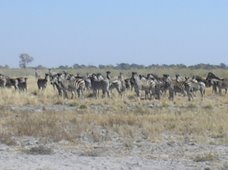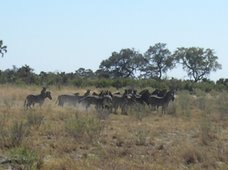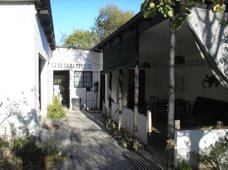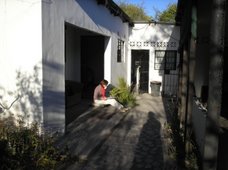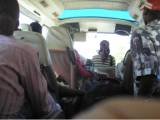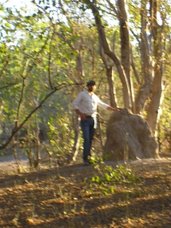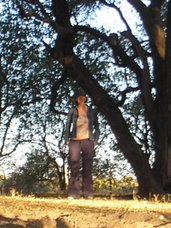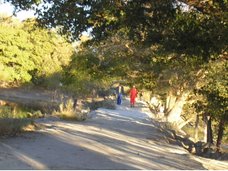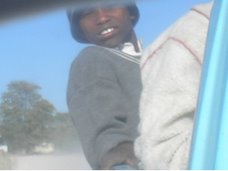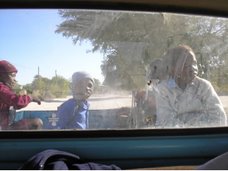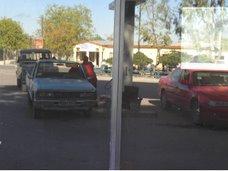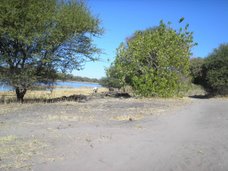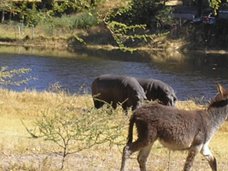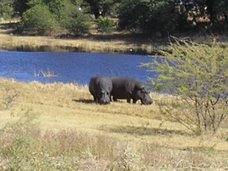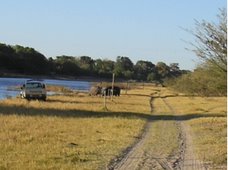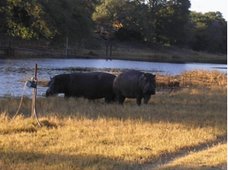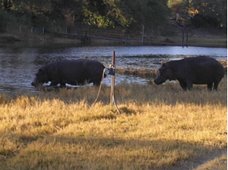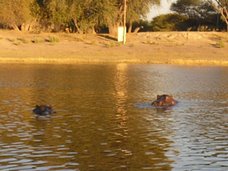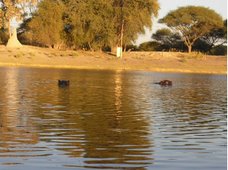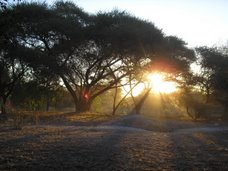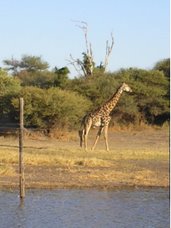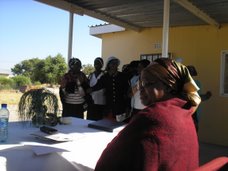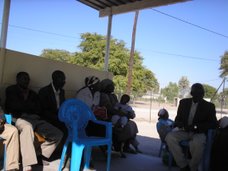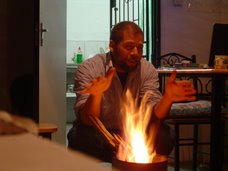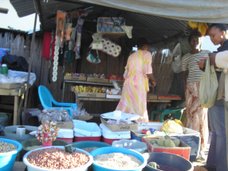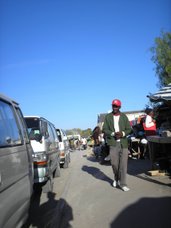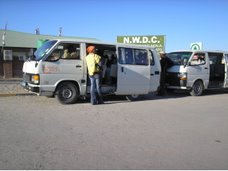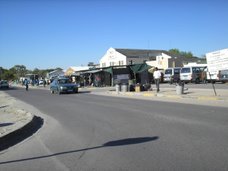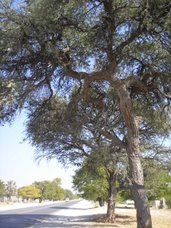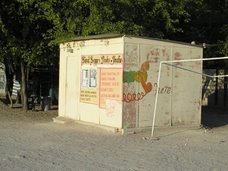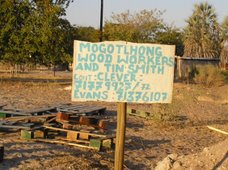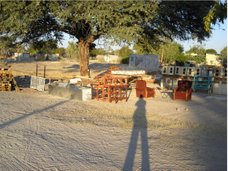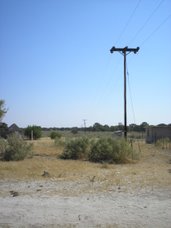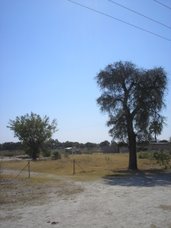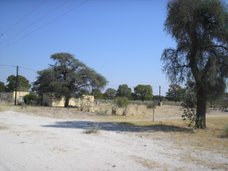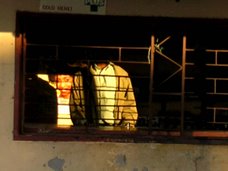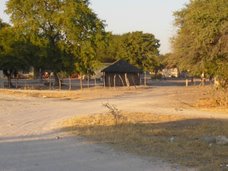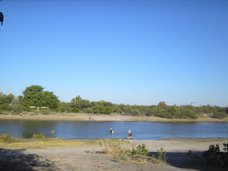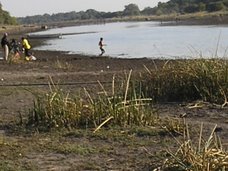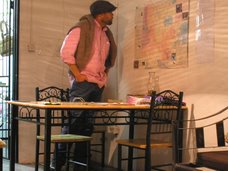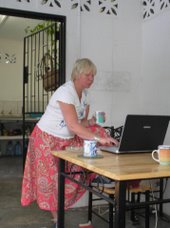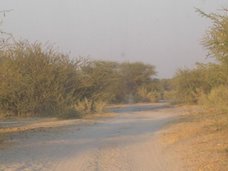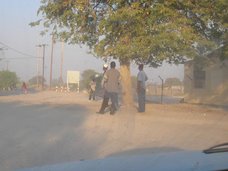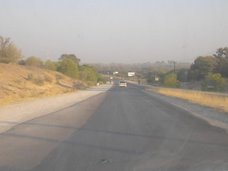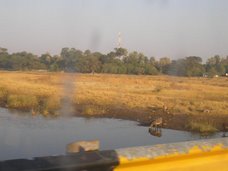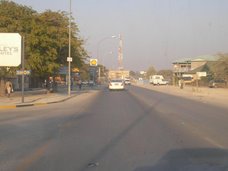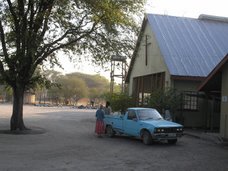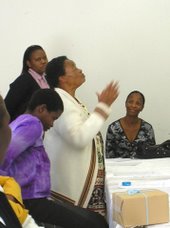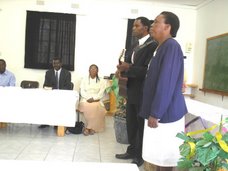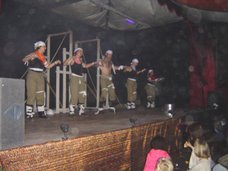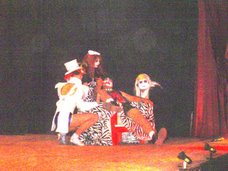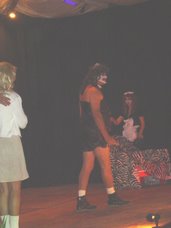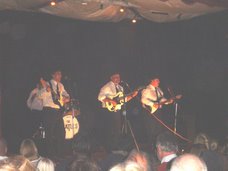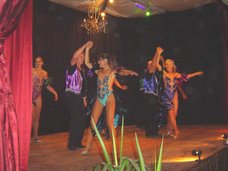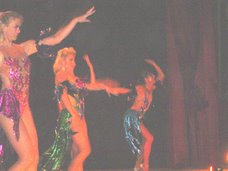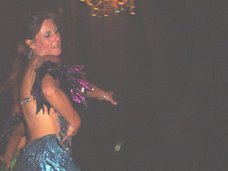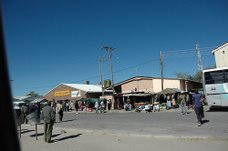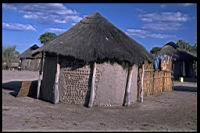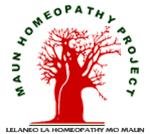Today (Wednesday 25th July) was one of our hardest working days। Wednesdays usually are as they are the days we do home visits। Home visits are hard work for several reasons. They require us driving over very rough and/or sandy roads and we often get stuck in the sand; Consultations are often taken outside patients houses in the yard in the heat of the sun; We see very weak and often bedridden patients; We see very severe physical pathology. On the plus side we meet very strong people.
The patients’ strength makes their condition all the more poignant as we meet very strong people who are imprisoned in their own bodies through weakness. You can hear their strength in their voices, see it in their eyes or hear it in their words and it makes them appear in a very pitiful and tortured state as they cannot fend for themselves or engage with the world at large any more.
Seeing this strength although saddening to see imprisoned in a bed makes me optimistic that the patient will in time recover and this week I’ve seen this strength win through.
Today we were very happy to see three of our patients who were bedridden a week ago sitting outside in the sun. One was the albino patient I described in an earlier posting. Her first words when we met her were ‘I’m well!’. Her ulcers were clearly healing and she was very pleased to show us the progress they were making whereas at our previous visit shewas very weak and in a lot of pain and her ulcers were open wounds.
Our second patient had been in bed for months with diarrhoea and vomiting. Today she was sitting in her yard in the shade of a tree, proud to tell us that she could walk to her outhouse and back. Next time, she told us ‘You’ll see me cooking’.
Our third patient had also had constant diarrhoea which was now improved. Like the other patients she was sitting in her yard in the sun with her mother, her daughter and her grandchildren who were all playing at ‘foreigners in a decrepit pick-up stuck in the sand’.
I’m not describing people rising from the dead here. In all three cases there is a long way to go before they are as healthy as they’d like to be but the fact that they are out of bed, have more physical comfort and energy than before and doing things they enjoy is a big step for them on the road to recovery.
I’m pleased to say that many of the patients I am seeing now are improving or are returning to homoeopathy after a long time of being well. I’m not saying that this is all down to my sudden appearance on the scene. It is more due to the strength which the patients themselves posess and the many other homoeopaths who have added their skill to the proces of recovery.
Thursday, July 26, 2007
Three Patients Sitting In The Sun.
Labels: Homoeopathy in the NHS Early Day Motion
Africa,
AIDS,
Botswana,
HIV,
Homeopathy,
Improvements in health,
Remedy Reaction,
The Maun Homeopathy Project,
Triad Method
The Flexibility of The Triad Method.
It’s when there is a change in symptoms rather than an improvement after the first prescription that one can see the flexibility of the triad method. An easy example togive is the first case at a subsequent follow up.
***The patient did well on their first and second prescriptions but they have returned. Their joint pains have returned but they find that they are now worse at the end of the day when they are at rest. They have to keep moving to keep the pains at bay. They began again around the time their children were threatened with expulsion from school because they were late with school fees (Everyone has to pay school fees in Botswana whether government or private school). The patient became worried for their children's future and took on extra work. Nothing much else worries them aside from their families welfare and their responsibilities.
In this case the aetiology of the joint pains and their characteristic of being worse for rest and better for continued motion indicates not Bryonia but Rhus Tox. The patients underlying constitution and background remain unchanged so far so the prescription can be repeated with the Bryonia, the initial remedy for the patients joint symptoms being changed for Rhus. Tox. Calc and Carc can be repeated as before.
***The patient did well on their first and second prescriptions but they have returned. Their joint pains have returned but they find that they are now worse at the end of the day when they are at rest. They have to keep moving to keep the pains at bay. They began again around the time their children were threatened with expulsion from school because they were late with school fees (Everyone has to pay school fees in Botswana whether government or private school). The patient became worried for their children's future and took on extra work. Nothing much else worries them aside from their families welfare and their responsibilities.
In this case the aetiology of the joint pains and their characteristic of being worse for rest and better for continued motion indicates not Bryonia but Rhus Tox. The patients underlying constitution and background remain unchanged so far so the prescription can be repeated with the Bryonia, the initial remedy for the patients joint symptoms being changed for Rhus. Tox. Calc and Carc can be repeated as before.
Labels: Homoeopathy in the NHS Early Day Motion
Africa,
AIDS,
Botswana,
HIV,
Homeopathy,
Layers Method,
Member of Parliament,
Prescribing Methods,
Remedy Reaction,
The Maun Homeopathy Project,
Triad Method
More Medicine of Experience.
I’d like to let you know more about the triad method and how I am using it in the treatment of patients with HIV. I described it in an earlier post as being like an often repeated single remedy. It is like that but it is also a subtle and flexible therapeutic intervention.
To make this easier I’ll give you an example of triad prescriptions for the sort of cases we often see. The cases given below are outline examples as a full case taking would be too much to present.
*** A patient has begun to get joint pains which are worse on motion and better for rest, these areaccompanied by a terrible headache which makes them just want to sit still and not be bothered by anybody. They naturally have become very bad tempered. Their focus in life is their home and family as they had to care for younger siblings and older relatives from an early age their parents died of cancer. They have recently had to cope with a bereavement and now care for another family members’ children. They take this responsibility very seriously. Their major worries are the pains which prevent them from working and this in turn makes them worry about how they will cope with their responsibilities.
After repertorisation the well indicated remedies include Bryonia, Cal.Carb. and Carcinosin. In this sort of case we would usually give each remedy one day apart in the appropriate potency for up 3 weeks Bryonia on Mondays, Calc. on Wednesdays and Carc. on Fridays.
Case 2
*** A patient is seen at home and they present with with diarrhoea accompanied by burning pains, respiratory difficulties, generalized physical pains at night and a very depresed state of mind. This has been continuing on and off for a long time but is now a chronic state and they are rapidly emaciating though they are trying to eat.
The well indicated remedies repertorise out as Ars. Alb.; Carbo.Veg.; and Syph.
As the condition is long standing and day by day worsens the patients health the remedies would be given over the course of a day in an appropriately low potency for a week.
In these hypothetical cases the patients show a good response at the follow up, they’re not completely cured but they’re much better than before.
So far so good. In these two cases the triad prescription has acted like a single remedy. There’s been a good reaction in the patient on all levels and the prescription can be repeated with confidence that it will continue the curative response in the patient.
To make this easier I’ll give you an example of triad prescriptions for the sort of cases we often see. The cases given below are outline examples as a full case taking would be too much to present.
*** A patient has begun to get joint pains which are worse on motion and better for rest, these areaccompanied by a terrible headache which makes them just want to sit still and not be bothered by anybody. They naturally have become very bad tempered. Their focus in life is their home and family as they had to care for younger siblings and older relatives from an early age their parents died of cancer. They have recently had to cope with a bereavement and now care for another family members’ children. They take this responsibility very seriously. Their major worries are the pains which prevent them from working and this in turn makes them worry about how they will cope with their responsibilities.
After repertorisation the well indicated remedies include Bryonia, Cal.Carb. and Carcinosin. In this sort of case we would usually give each remedy one day apart in the appropriate potency for up 3 weeks Bryonia on Mondays, Calc. on Wednesdays and Carc. on Fridays.
Case 2
*** A patient is seen at home and they present with with diarrhoea accompanied by burning pains, respiratory difficulties, generalized physical pains at night and a very depresed state of mind. This has been continuing on and off for a long time but is now a chronic state and they are rapidly emaciating though they are trying to eat.
The well indicated remedies repertorise out as Ars. Alb.; Carbo.Veg.; and Syph.
As the condition is long standing and day by day worsens the patients health the remedies would be given over the course of a day in an appropriately low potency for a week.
In these hypothetical cases the patients show a good response at the follow up, they’re not completely cured but they’re much better than before.
So far so good. In these two cases the triad prescription has acted like a single remedy. There’s been a good reaction in the patient on all levels and the prescription can be repeated with confidence that it will continue the curative response in the patient.
Labels: Homoeopathy in the NHS Early Day Motion
Africa,
AIDS,
Botswana,
HIV,
Homeopathy,
Layers Method,
Prescribing Methods,
Remedy Reaction
The Dawning Of A New Era
The river is halfway up the tree trunk which marks the makorro stop behind our house. The river is high all along the banks. The landscaspe here is in constant flux. The new road being built has successive layers of surfasce put on it and levelled off. The tyre tracks on the dirt roads which have been carved in the land beside it, winding in and out of trees seem to develop and lose ruts and potholes by the day.
We’re entering a new and exciting phase here in Maun. It is only one third as exciting now as it was a week or two ago but it is still exciting. Initially Anne and I were to be responsible for setting up a new clinic in Sehitwa, 90K southwest of Maun on the shores of Lake Ngami. We were also given responsibility for re-energising the poorly attended Senonori Support Group Clinic and of re-establishing our relationship with Bana Ba Letsatsi which means children of the street and as you can see from it’s name is a charity for streetchildren and children orphaned by HIV.
Sehitwa and Senonori unfortunately had to be put on the back burner because of logistical difficulties. As Sehitwa is 90k away we would have had to have used a vehicle other than our backie which is in pretty poor condition because it has to cope with some pretty rough terrain and is driven by several different people each year who each have to get used to an antiquated backie and very rough roads. This problem was almost solved by a member of the Lutheran Church’s congragation offering to loan us a vehicle for the journey. The only problem was, they wanted us to pay for mileage/wear and tear to the vehicle at 3 pula per kilometer in addition to us paying for petrol.
Then there was the question of which day we should go. We’d all agreed that once a month was a good routine for a one day clinic at the Lutheran Church in Sehitwa. For the Sehitwa group Thursdays was a god day. For MHP Mondays were preferable. Because there were too many if’s and but’s this project has to beleft until we get a new vehicle in September.
Senonori is another pickle. The time before last when we visited we saw only one patient. We had a chat with Rosinah the Senonori Support Group leader and she suggested that it was due to people’s fear of being stigmatised that they didn’t come to see us. We had another discussion with Rosinah this week and she told us the following story. As well as people in the area being worried about becoming stigmatised if they are seen visiting the homoeopathic clinic there is also a problem with the support group itself with whom we work. I can’t be quite sure of what it is despite having spoken to Rosinah who is Senonori support Group’s founder. It has something to do with it not being registered with the regional council department which looks after support groups despite SSG having applied for registration 3 years ago. Rosinah tells me that in addition to a lack of local government support and the fear of stigma of it’s members there is also now a suspicion in the community that Maun Homeopathy Project is something to do with the local council and we are checking up on them.
We’d arranged with Rosinah on several occasions to speak at local Kgotla meetings but due to one cause or another they’ve not happened. So, we are to continue turning up at Senonori but not to expect much to happen.
So, like I said, due to the Senonori and Sehitwa projects being put on the shelf things are only one third as exciting as they appeared to be. We do still have Bana Ba Letsatsi to look forward to which we will begin in August.
We’re entering a new and exciting phase here in Maun. It is only one third as exciting now as it was a week or two ago but it is still exciting. Initially Anne and I were to be responsible for setting up a new clinic in Sehitwa, 90K southwest of Maun on the shores of Lake Ngami. We were also given responsibility for re-energising the poorly attended Senonori Support Group Clinic and of re-establishing our relationship with Bana Ba Letsatsi which means children of the street and as you can see from it’s name is a charity for streetchildren and children orphaned by HIV.
Sehitwa and Senonori unfortunately had to be put on the back burner because of logistical difficulties. As Sehitwa is 90k away we would have had to have used a vehicle other than our backie which is in pretty poor condition because it has to cope with some pretty rough terrain and is driven by several different people each year who each have to get used to an antiquated backie and very rough roads. This problem was almost solved by a member of the Lutheran Church’s congragation offering to loan us a vehicle for the journey. The only problem was, they wanted us to pay for mileage/wear and tear to the vehicle at 3 pula per kilometer in addition to us paying for petrol.
Then there was the question of which day we should go. We’d all agreed that once a month was a good routine for a one day clinic at the Lutheran Church in Sehitwa. For the Sehitwa group Thursdays was a god day. For MHP Mondays were preferable. Because there were too many if’s and but’s this project has to beleft until we get a new vehicle in September.
Senonori is another pickle. The time before last when we visited we saw only one patient. We had a chat with Rosinah the Senonori Support Group leader and she suggested that it was due to people’s fear of being stigmatised that they didn’t come to see us. We had another discussion with Rosinah this week and she told us the following story. As well as people in the area being worried about becoming stigmatised if they are seen visiting the homoeopathic clinic there is also a problem with the support group itself with whom we work. I can’t be quite sure of what it is despite having spoken to Rosinah who is Senonori support Group’s founder. It has something to do with it not being registered with the regional council department which looks after support groups despite SSG having applied for registration 3 years ago. Rosinah tells me that in addition to a lack of local government support and the fear of stigma of it’s members there is also now a suspicion in the community that Maun Homeopathy Project is something to do with the local council and we are checking up on them.
We’d arranged with Rosinah on several occasions to speak at local Kgotla meetings but due to one cause or another they’ve not happened. So, we are to continue turning up at Senonori but not to expect much to happen.
So, like I said, due to the Senonori and Sehitwa projects being put on the shelf things are only one third as exciting as they appeared to be. We do still have Bana Ba Letsatsi to look forward to which we will begin in August.
Labels: Homoeopathy in the NHS Early Day Motion
Africa,
AIDS,
Bana Ba Letsatsi,
Botswana,
HIV,
Homeopathy,
Maun,
National Health Service,
The Maun Homeopathy Project
Subscribe to:
Comments (Atom)






